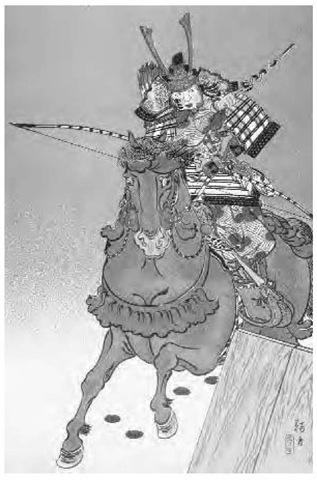The meaning and usage of the terms budo, bujutsu, and bugei as appellations for the martial arts of Japan are subjects of considerable confusion and misinformation among practitioners and aficionados of these arts— Japanese as well as Western. Among modern authorities in Japan the terms have acquired a more or less conventional usage adopted mainly to facilitate discussion of the multiple goals and purposes of combative training: Bujutsu (warrior skills [1]) describes the various Japanese martial disciplines in their original function as arts of war; budo (the warrior’s way [2]) denotes the process by which the study of bujutsu becomes a means to self-development and self-realization; and bugei (warrior arts [3]) is a catchall term for the traditional Japanese military sciences, embracing both bujutsu and budo.
It must be stressed, however, that such precise usage is modern— adopted for analytical purposes—not traditional. Projecting it backward into earlier times, as much literature on Japanese martial art does, is anachronous.
Minamoto Yoritomo (1147-1199) was the general who became shogun in 1185 and was instrumental in founding the samurai system.
Western texts on Japanese fighting arts often assert that during the Tokugawa period (a.d. 1600-1868) martial art masters began replacing the suffix jutsu [4], meaning “art” or “skill,” with do [5], meaning “way” or “path,” in the names of their disciplines, to distinguish the sublime from the purely technical applications and purposes of martial art. Thus ken-jutsu, “the art of swordsmanship,” became kendo, “the way of the sword”; bujutsu, “the martial skills,” became budo, “the martial way”; and so on. The historical record, however, does not support this conclusion. Some
Meiji-period (1868-1912) educators did differentiate -jutsu and -do in precisely this fashion, but their forebears did not.
Historically the samurai employed a cornucopia of terms for their fighting arts, some still in common use today, others not (swordsmanship, for example, was called kenjutsu [6], kendo [7], kenpo [8], hyoho [9], tojutsu [10], gekken [11], shigeki no jutsu [12], and various other appellations, without distinction of form or content). The meaning and popularity of each term varied from age to age. Two of the oldest words for martial art are bugei and hyoho (more commonly pronounced heiho in modern usage). Both are Chinese borrowings, and both appear in Japanese texts as far back as the turn of the eighth century. The early meanings of the two words overlapped to a substantial extent, but by the Tokugawa period, hyoho had narrowed considerably, from a general term to one of several alternative names for swordsmanship. Bugei, in the meantime, had become a generic appellation for the fighting arts. Today, heiho simply means “strategy” in general usage, while scholars and practitioners of swordsmanship and related arts often apply it in more restricted fashion to designate the principles around which a particular school’s approach to combat is constructed.
Budo and bujutsu came into fashion during the medieval and early modern periods. Budo, which appeared in print at least as early as the thirteenth century, seems to have been rather ambiguous in meaning until the Tokugawa period, when it sometimes carried special connotations. Nineteenth-century scholar and philosopher Aizawa Yasushi differentiated budo from bugei in the following manner: “The arts of the sword, spear, bow and saddle are the bugei; to know etiquette and honor, to preserve the way of the gentleman, to strive for frugality, and thus become a bulwark of the state, is budo” (Tominaga 1971, 1). For at least some Tokugawa-period writers, in other words, budo had far broader implications than it does today, designating what modern authors often anachronistically call bushido [13]—that is, the code of conduct, rather than the military arts, of the warrior class. Nevertheless, pre-Meiji nomenclature for the martial disciplines betrayed no discernible systematization. The sources use bujutsu interchangeably with bugei, and use both in ways that clearly imply a construct with moral, spiritual, or social components, as well as technical ones.

![tmp8E-17_thumb[2] tmp8E-17_thumb[2]](http://lh4.ggpht.com/_1wtadqGaaPs/THd311cd1YI/AAAAAAAAWP0/LEuHtrL_DAg/tmp8E17_thumb2_thumb.jpg?imgmax=800)
